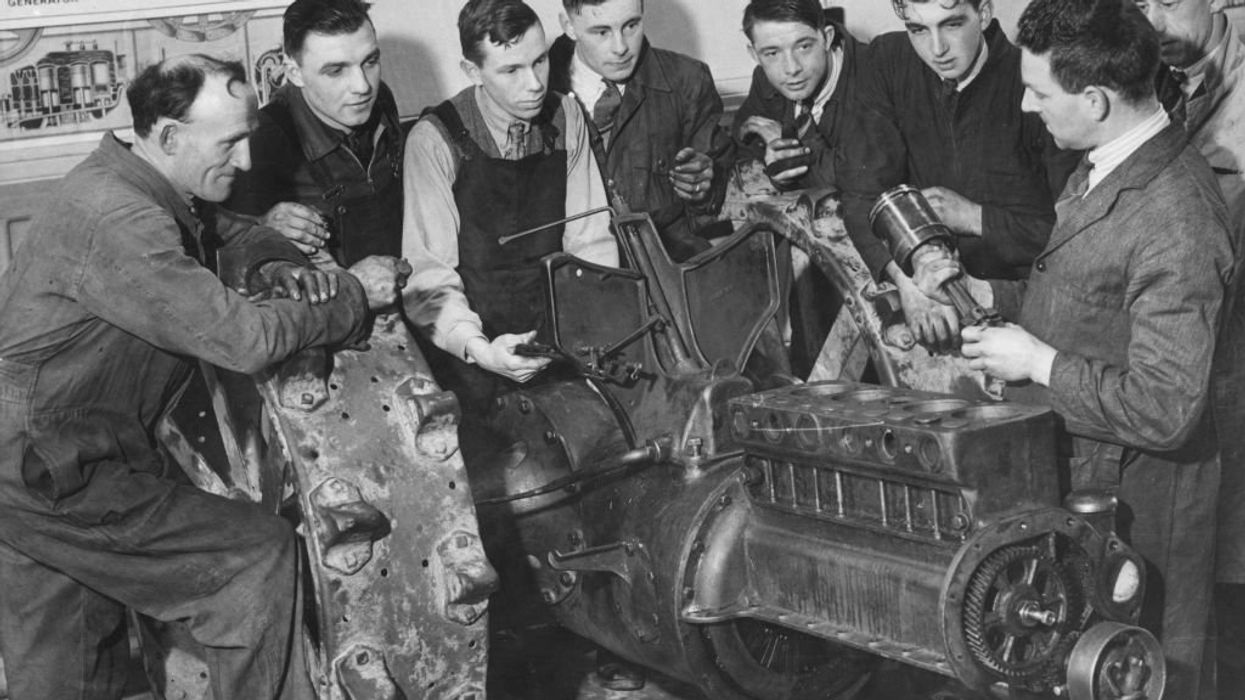LITTLE ROCK, Ark. (AP) -- States are trying to reduce prison populations with secretive, new psychological assessments to predict which inmates will commit future crimes and who might be safe to release, despite serious problems and high-profile failures, an Associated Press investigation found.
These programs are part of a national, data-driven movement to drive down prison populations, reduce recidivism and save billions. They include questionnaires often with more than 100 questions about an offender's education, family, income, job status, history of moving, parents' arrest history - or whether he or she has a phone. A score is affixed to each answer and the result helps shape how the offender will be supervised in the system - or released from custody.
Used for crimes ranging from petty thievery to serial murders, these questionnaires come with their own set of risks, according to the AP's examination.
Many rely on criminals to tell the truth, and jurisdictions don't always check to make sure the answers are accurate. They are used inconsistently across the country, sometimes within the same jurisdiction. The same defendant might be scored differently in the same crime.
 In this photo taken Nov. 14, 2014, 71-year old Diana Miller, who agreed to be interviewed by The Associated Press under her middle and married names, talks about her rape by Arkansas parolee Milton Thomas. The elderly widow says that, Thomas who was mowing a nearby lawn, asked for a glass of water and then forced his way in and raped her. He pushed her on her bed with enough force to knock her front teeth loose she said. “You realize that you’re a parolee, this is going to mean you’re going to spend the rest of your days behind bars,” she told Thomas. She said he laughed and went back to mowing. Thomas is currently in custody at the North Central Unit at Calico Rock, Arkansas. His trial date is expected to be March 2015. (AP Photo/ Bill Gorman)
In this photo taken Nov. 14, 2014, 71-year old Diana Miller, who agreed to be interviewed by The Associated Press under her middle and married names, talks about her rape by Arkansas parolee Milton Thomas. The elderly widow says that, Thomas who was mowing a nearby lawn, asked for a glass of water and then forced his way in and raped her. He pushed her on her bed with enough force to knock her front teeth loose she said. “You realize that you’re a parolee, this is going to mean you’re going to spend the rest of your days behind bars,” she told Thomas. She said he laughed and went back to mowing. Thomas is currently in custody at the North Central Unit at Calico Rock, Arkansas. His trial date is expected to be March 2015. (AP Photo/ Bill Gorman)
Supporters cite some research, such as a 1987 Rand Corp. study that said the surveys accurately can predict the likelihood of repeat offenses as much as 70 percent of the time if they are used correctly. But even the Rand study, one of the seminal pieces of research on the subject, was skeptical of the surveys' overall effectiveness. It's nearly impossible to measure the surveys' impact on recidivism because they are only part of broader efforts.
Some surveys have the potential to punish people for being poor or uneducated by attaching a lower risk to those who have steady work and high levels of education. They surveys are clouded in secrecy. Some states never release the evaluations, shielding government officials from being held accountable for decisions that affect public safety.
"It is a vast improvement over the decision-making process of 20, 30 years ago when parole boards and the courts didn't have any statistical information to base their decisions on," said Adam Gelb, director of the Public Safety Performance Project at the Pew Charitable Trusts, which is working with the Justice Department to shape reforms nationally.
There are dozens of different surveys in use.
In the case of Milton Thomas in Arkansas, a parolee accused of raping a 70-year-old woman, the state's predictions were inconsistent.
 This undated handout photo provided by the Arkansas Department of Correction shows Milton Thomas. On a hot Friday in July, a parolee was mowing a lawn in a small cul-de-sac on the west side of the city when he stopped to ask for a glass of water. The 71-year-old widow whose yard he was mowing, told him to wait on her porch. Instead, she said, he jerked the storm door open, slammed her against the wall, forced her into the bedroom and raped her. The parolee pushed her with such force, she said, her front teeth were knocked loose. Then he went back to mowing the lawn.Milton Thomas, 58, said he’s not guilty. His trial is set for March. (AP Photo/Arkansas Department of Correction)
This undated handout photo provided by the Arkansas Department of Correction shows Milton Thomas. On a hot Friday in July, a parolee was mowing a lawn in a small cul-de-sac on the west side of the city when he stopped to ask for a glass of water. The 71-year-old widow whose yard he was mowing, told him to wait on her porch. Instead, she said, he jerked the storm door open, slammed her against the wall, forced her into the bedroom and raped her. The parolee pushed her with such force, she said, her front teeth were knocked loose. Then he went back to mowing the lawn.Milton Thomas, 58, said he’s not guilty. His trial is set for March. (AP Photo/Arkansas Department of Correction)
Three risk assessment surveys produced three different results. When Thomas, 58, was up for parole in 2013 after serving time for theft, the Arkansas Parole Board assessed him as a high risk to re-offend.
He was released in November of that year, and the state's community supervision agency assessed him again. This one determined Thomas was a low risk, Thomas said, and required the minimum amount of supervision and no rehabilitative programs. After Thomas was arrested on the rape charge last July, the parole board assessed him again and downgraded his risk from high to moderate.
While these results seem to defy common sense, the board said the system worked and there was a simple reason for lowering Thomas' risk: varying accounts of Thomas' age when he was first arrested.
In 2013 in Texas, a routine risk assessment used on sex offenders when they are released from prison found convicted rapist Darren Vann to be a low-risk to re-offend. About a year later, in Indiana, Vann confessed to police that he killed seven women.
Experts said the risk-and-needs assessment surveys should be evaluated every few years. Texas, which in 2000 started using the instrument that evaluated Vann, is just now doing this, a state spokesman said.
The Justice Department's position on the surveys is inconsistent. On one hand, the department is helping bankroll this movement by providing millions of dollars to help states develop and roll out new policies. Yet it's also putting on the brakes and is reluctant to use them for the federal prison population.
"Criminal sentences must be based on the facts, the law, the actual crimes committed, the circumstances surrounding each individual case, and the defendant's history of criminal conduct," Attorney General Eric Holder told the National Association of Criminal Defense Lawyers in August. "They should not be based on unchangeable factors that a person cannot control, or on the possibility of a future crime that has not taken place."
Cost savings, however, make these tools appealing to states.
North Carolina, for instance, could save $560 million by 2017, a Justice Department report concluded. Between 2011 and 2014, the North Carolina prison population decreased by more than 3,000 people, according to the state. These reforms, including the use of risk assessments, has saved the state nearly $84 million, and it plans to route $32 million of those savings for community treatment programs.
----
Associated Press writer Alex Sanz in Atlanta contributed to this report.





